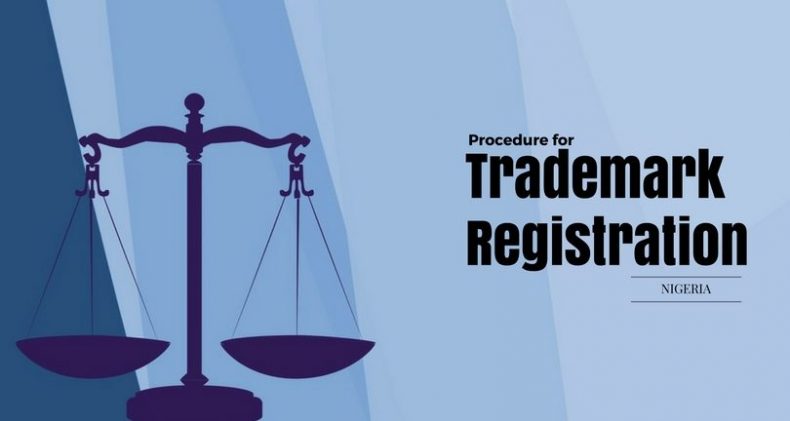
Trademarks are more than just logos or symbols. They are powerful tools that protect brands and ensure that consumers can identify the source of products and services they trust. In the competitive landscape of modern business, the power of trademark protection cannot be underestimated. This article delves into the significance of trademarks, their role in safeguarding brand identity, and the comprehensive protection they offer beyond the visual representation of a logo.
Understanding Trademarks
What is a Trademark?
A trademark is a recognizable sign, design, or expression that distinguishes products or services of a particular source from those of others. It can be a word, phrase, symbol, logo, or combination of these elements. Trademarks serve as a badge of origin, helping consumers identify and differentiate between brands in the marketplace.
Types of Trademarks
Trademarks can take various forms, each offering unique ways to protect a brand’s identity. Common types include:
- Word Marks: These trademarks consist of words or letters that identify a brand, such as “Nike” or “Coca-Cola.”
- Design Marks: These include logos or symbols, like the Apple logo or McDonald’s golden arches.
- Composite Marks: These combine both words and designs, offering a more comprehensive form of protection.
- Sound Marks: These are sounds associated with a brand, such as the NBC chimes or the MGM lion roar.
- Color Marks: These trademarks involve specific colors associated with a brand, like Tiffany & Co.’s distinctive blue.
The Purpose of Trademarks
The primary purpose of trademarks is to protect consumers from confusion and deception. By ensuring that only authorized parties can use a particular mark, trademarks maintain the integrity and reputation of a brand. This protection extends to both the business and the consumer, fostering trust and loyalty in the marketplace.
The Legal Framework of Trademark Protection
Trademark Registration
While trademarks can be established through use, registration provides stronger legal protection. Registering a trademark with the appropriate government authority, such as the United States Patent and Trademark Office (USPTO), grants the owner exclusive rights to use the mark in connection with specified goods or services.
The Benefits of Trademark Registration
Registered trademarks offer several advantages, including:
- Legal Presumption of Ownership: Registration provides a legal presumption that the registrant is the rightful owner of the mark.
- Exclusive Rights: The owner has exclusive rights to use the mark nationwide in connection with the registered goods or services.
- Protection Against Infringement: Registered trademarks can be used to prevent others from using a confusingly similar mark.
- Enhanced Damages in Litigation: In case of infringement, the owner may be entitled to enhanced damages and legal fees.
- Basis for International Protection: Registration can serve as a basis for obtaining trademark protection in other countries.
The Process of Trademark Registration
The process of registering a trademark typically involves several steps:
- Search and Clearance: Conduct a comprehensive search to ensure that the mark is not already in use.
- Application Filing: Submit a trademark application to the appropriate authority, including details about the mark and its intended use.
- Examination: The application is reviewed for compliance with legal requirements and potential conflicts with existing marks.
- Publication: If approved, the mark is published for opposition, allowing third parties to challenge the registration.
- Registration: If no opposition is filed or if opposition is resolved in favor of the applicant, the mark is registered.
The Power of Trademark Protection
Brand Identity and Consumer Trust
Trademarks play a crucial role in building brand identity and fostering consumer trust. A strong trademark distinguishes a brand from competitors, making it easily recognizable to consumers. This recognition creates a sense of reliability and quality, encouraging repeat business and customer loyalty.
Legal Protection and Enforcement
Trademarks provide robust legal protection against unauthorized use and infringement. Trademark owners have the right to take legal action against parties that use their mark without permission or use a confusingly similar mark. This protection helps maintain the brand’s integrity and prevents dilution of its distinctiveness.
Market Position and Competitive Advantage
A well-protected trademark can give a brand a significant competitive advantage. It serves as a valuable asset, enhancing the brand’s market position and attracting investment. Trademarks can also be licensed or franchised, generating additional revenue streams for the business.
International Expansion and Global Recognition
Trademarks facilitate international expansion by providing a basis for protection in foreign markets. Brands seeking to enter new markets can rely on their registered trademarks to safeguard their identity and reputation. This global recognition helps establish a consistent brand image across different regions.
Challenges and Considerations in Trademark Protection
Trademark Infringement
Trademark infringement occurs when a party uses a mark that is identical or confusingly similar to a registered trademark without authorization. Infringement can lead to consumer confusion, dilution of the brand’s distinctiveness, and potential damage to its reputation. Addressing infringement promptly through legal action is essential to protect the brand’s interests.
Trademark Dilution
Trademark dilution involves the weakening of a famous trademark’s distinctiveness or reputation, even without direct competition or consumer confusion. This can occur through blurring (when a mark’s distinctiveness is diminished) or tarnishment (when a mark’s reputation is harmed). Famous brands must be vigilant in preventing dilution to maintain their unique identity.
Trademark Counterfeiting
Counterfeiting involves the production and sale of imitation goods bearing a trademark without authorization. Counterfeit products can harm a brand’s reputation, reduce consumer trust, and result in significant financial losses. Combating counterfeiting requires a multi-faceted approach, including legal enforcement, collaboration with authorities, and consumer education.
International Trademark Protection
Expanding a brand internationally presents unique challenges in trademark protection. Different countries have varying legal frameworks and registration processes. Brands must navigate these complexities to ensure their trademarks are protected in each market. International treaties, such as the Madrid Protocol, facilitate the process of obtaining trademark protection across multiple countries.
Trademark Renewal and Maintenance
Trademark protection is not indefinite and requires ongoing maintenance. Registered trademarks must be renewed periodically to remain in force. Failure to renew a trademark can result in its cancellation, leaving the brand vulnerable to unauthorized use. Regular monitoring and timely renewal of trademarks are crucial to maintaining protection.
The Role of Trademark Professionals
Trademark Attorneys
Trademark attorneys specialize in trademark law and provide essential services to businesses seeking trademark protection. They assist with trademark searches, application filings, and responding to office actions. Trademark attorneys also represent clients in trademark disputes, opposition proceedings, and litigation.
Trademark Agents
Trademark agents are professionals authorized to act on behalf of clients in trademark matters. They handle the administrative aspects of trademark registration, including filing applications, managing correspondence with trademark offices, and ensuring compliance with legal requirements. Trademark agents play a critical role in streamlining the registration process.
Trademark Monitoring Services
Trademark monitoring services help businesses track the use of their trademarks and identify potential infringements. These services use advanced technology and databases to monitor various sources, including online platforms, marketplaces, and domain registrations. Early detection of unauthorized use allows businesses to take timely action to protect their trademarks.
Strategies for Effective Trademark Protection
Conducting Comprehensive Trademark Searches
Before filing a trademark application, conducting a comprehensive search is essential to identify potential conflicts with existing marks. A thorough search includes checking trademark databases, business directories, domain registrations, and online platforms. This step helps avoid costly legal disputes and ensures the chosen mark is distinctive.
Registering Trademarks in Key Markets
To maximize protection, businesses should register their trademarks in key markets where they operate or plan to expand. International treaties, such as the Madrid Protocol, simplify the process of obtaining protection in multiple countries. Registering trademarks in strategic markets prevents unauthorized use and builds a strong global brand presence.
Enforcing Trademark Rights
Vigilant enforcement of trademark rights is crucial to maintaining their value. Businesses should actively monitor the marketplace for potential infringements and take swift legal action when necessary. This includes sending cease-and-desist letters, initiating opposition or cancellation proceedings, and pursuing litigation against infringers.
Educating Employees and Partners
Educating employees and business partners about the importance of trademark protection is essential to prevent unintentional misuse. Clear guidelines on proper trademark usage, branding standards, and reporting potential infringements should be established. This ensures consistent and authorized use of trademarks across all business activities.
Utilizing Trademark Licensing and Franchising
Trademark licensing and franchising offer opportunities to expand a brand’s reach and generate revenue. Licensing allows third parties to use the trademark in exchange for royalties or fees, while franchising enables the brand to expand through a network of independent operators. Both strategies require careful management to ensure brand consistency and quality.
The Future of Trademark Protection
Technological Advancements
Advancements in technology are shaping the future of trademark protection. Artificial intelligence and machine learning are being used to enhance trademark search and monitoring processes. These technologies can analyze vast amounts of data and identify potential infringements more efficiently, helping businesses protect their trademarks proactively.
Evolving Legal Frameworks
As the business landscape evolves, so do legal frameworks governing trademark protection. Governments and international organizations are continually updating trademark laws to address new challenges, such as online infringement and counterfeit goods. Staying informed about legal developments is essential for businesses to adapt their trademark strategies accordingly.
Globalization and Cross-Border Collaboration
Globalization is driving the need for cross-border collaboration in trademark protection. Businesses must navigate diverse legal systems and cooperate with international authorities to enforce their rights effectively. International treaties and agreements, such as the TRIPS Agreement, facilitate cooperation and harmonization of trademark laws across countries.
Brand Authenticity and Consumer Trust
In an era of increasing consumer awareness, brand authenticity and trust are paramount. Trademarks play a vital role in establishing and maintaining this trust. Businesses must focus on delivering high-quality products and services that align with their brand values. Authenticity and consistency in branding reinforce consumer confidence and loyalty.
Conclusion
Trademark protection goes beyond the visual representation of a logo. It is a powerful tool that safeguards brand identity, fosters consumer trust, and provides a competitive advantage in the marketplace. From registration and enforcement to combating counterfeiting and dilution, trademarks offer comprehensive protection for businesses. By leveraging the expertise of trademark professionals, conducting thorough searches, and adopting proactive strategies, businesses can maximize the value of their trademarks and navigate the complex landscape of modern commerce. As technology and legal frameworks continue to evolve, the power of trademark protection will remain a cornerstone of brand success in the digital age.



